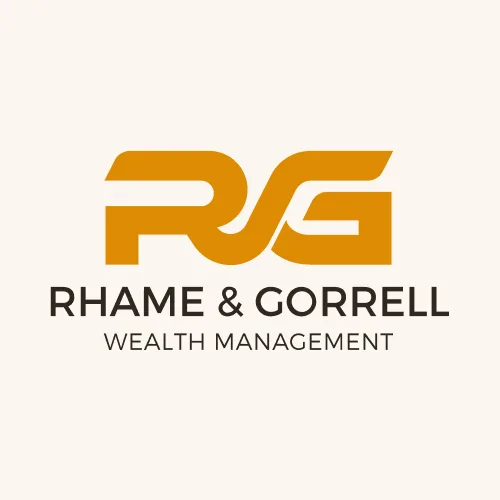Tax Optimization Reality: It’s Not What You Make, It’s What You Keep
Understand How Tax Optimization Can Make You Money
As part of our ongoing effort to merge technology with client service and investment management, we are now able to significantly streamline a very important part of your overall financial program – tax efficiency. While it is important to create a viable financial plan that encompasses the right amount of risk and return balance, it is even more important to be able to understand and manage the tax implications of such a strategy. There are several ways to attack this issue, but the two most effective means of managing tax exposure are tax loss harvesting and asset location. Tax loss harvesting is the more common of the two, and it involves strategically realizing potential losses in your portfolio and using those losses to offset capital gains and up to $3,000 of ordinary income per year. Asset location is a more complex strategy and it involves weighting certain asset classes and securities and securities according to how tax efficient they are and placing them in the best vehicle to take advantage of their tax status. This strategy is not applicable for all investor portfolios, but it is a great way to potentially add incremental after-tax income over time without increasing risk. This is something that we will talk about with you during our annual portfolio reviews, but if you have questions after reading below, please call our office and we can talk about the specifics as it relates to your portfolio.
Tax Advantaged Asset Allocation
One of the key components of our investment discipline has nothing to do with investment returns, but everything to do with investment results. Where investments are located-meaning the type of account that they are placed in-can make a significant difference in how much you can earn on an after-tax basis over time. This is because different assets are taxed subject to different tax rules and different types of accounts have separate treatment of how taxes are applied. Understanding which investments are likely to generate a specific type of tax treatment and placing those investments into the proper account can have significant advantages. This strategy, called active asset location, has the potential to lower your overall tax bill and increase your real return. Research has shown that proper use of this strategy can add 25-50 basis points of “risk-free” annual value to a portfolio.
One very important distinction to make is that this strategy is not a substitute for investment discipline. While tax treatment is important, investors should start with a sensible strategy for the specific mix of investments they own. A poor investment choice placed in a tax advantaged location is still inferior to a sound investment in a tax-disadvantaged location. The benefits of this strategy occur AFTER the investment choices have been made. Once your asset allocation (where you spend your investment dollars) is in place, active asset location (where you put your investment dollars) may be implemented to improve after-tax returns.
From a portfolio perspective, it makes sense to know the potential tax implications of various types of investments. As a rule, bonds, or any instrument that generates most of its income as interest, are generally highly tax inefficient, because the interest payments are taxed at ordinary income rates which are usually higher than capital gains rates. Higher yielding types of fixed-income investments are the most tax-inefficient and tax-free municipal bonds and U.S. Saving Bonds are the most efficient, as they are exempt from taxes.
Individual stocks are relatively tax efficient if held long enough to qualify as a long-term holding. This is because qualified dividends and capital gains on the sale of stocks held a year or more are taxed at a top federal rate of 23.8% (1). Investors with lower taxable income levels would pay 18.8%, 15% or 0% depending upon their specific tax bracket. Equity-based exchange-traded funds (ETFs) are essentially taxed like stocks in most cases.
Equity mutual funds are more complicated to analyze, because the tax-efficiency depends upon how active the fund is. Actively managed stock funds are tax inefficient because of high turnover rates, which create short-term capital gains, which are taxed at the higher ordinary income tax rates. This is one of the criteria that we look at in our selection process when evaluating different Fund investment options. As stated earlier, tax-efficiency would not be the basis for selection, but it might be the tie-breaker between two funds equal in performance.
This strategy does not make sense for every investor, but there are some specific instances where it would make sense to discuss this option.
High current marginal income tax rate: If you are in one of the highest three federal tax brackets, a location strategy could be a way to increase after-tax returns without assuming additional risk. The higher the marginal tax-bracket, the more potential tax benefits may be realized.
Expected lower income taxes in retirement: An investment strategy that is designed to take advantage of additional tax deferral now can have a significant impact down the road. Delaying taxation has benefits for investment growth, and distributions in retirement may be taxed at a potentially lower rate.
Long-term investment horizon: Active asset location strategies generally take time to reap significant benefits. The longer assets are invested, the greater the potential benefits from tax deferral.
Over extended periods of time, the penalty for being tax-inefficient is magnified. Tax deferral benefits applied over long-term investment horizons in many instances may make up for sub-standard investment performance, especially at the higher tax rate levels.
To show the potential benefits of an asset location strategy, we examine a $1,000,000 portfolio that is allocated equally to equities and bonds. Our investment assumptions for the example are as follows:
- Fixed Income generates long-term return of 5%, taxable at 25% ordinary income
- Equities generate long-term return of 10%, taxable at 15% long-term capital gains rate
- Investment horizon of 20 years
If the bond investments were held in the taxable account and the equity investments were held in the non-taxable, the total after-tax net return after 20 years would be $3,566,888. This would have been the least tax efficient way to place your assets. If you had spread the investments equally between the two types of accounts, your results would have generated an additional $86,000 after tax.
However, employing a tax location strategy that placed the bonds in the non-taxable account and the equities in the taxable account would have generated an additional $288,000 with no additional risk. Further, to illustrate the value of time in this example, if we carried the investments for an additional 10 years, the additional benefit would have been $984,000.
While this is a hypothetical example, and there would likely be some distributions over the investment horizon, and tax rates for various assets in the portfolio would vary, but the basic concept remains valid. The opportunity to be able to proactively target potential tax efficiencies within your portfolio is something that every one of our clients should be aware of and we would welcome the opportunity to discuss this further with you.
Need Some Help?
If you’d like some help from one of our CPAs or CERTIFIED FINANCIAL PLANNER (CFP®) advisors regarding this strategy and how it applies to you, the Rhame & Gorrell Wealth Management team is here to help.
Our experienced Wealth Managers facilitate our entire suite of services including financial planning, investment management, tax optimization, estate planning, and more to our valued clients.
Feel free to contact us at (832) 789-1100, service@rgwealth.com, or click the button below to schedule your complimentary consultation today.
IMPORTANT DISCLOSURES:
Corporate benefits may change at any point in time. Be sure to consult with human resources and review Summary Plan Description(s) before implementing any strategy discussed herein.Rhame & Gorrell Wealth Management, LLC (“RGWM”) is an SEC registered investment adviser with its principal place of business in the State of Texas. Registration as an investment adviser is not an endorsement by securities regulators and does not imply that RGWM has attained a certain level of skill, training, or ability. This material has been prepared for informational purposes only, and is not intended to provide, and should not be relied on for, tax, legal or accounting advice. You should consult your own CPA or tax professional before engaging in any transaction. The effectiveness of any of the strategies described will depend on your individual situation and should not be construed as personalized investment advice. Past performance may not be indicative of future results and does not guarantee future positive returns.
For additional information about RGWM, including fees and services, send for our Firm Disclosure Brochures as set forth on Form ADV Part 2A and Part 3 by contacting the Firm directly. You can also access our Firm Brochures at www.adviserinfo.sec.gov. Please read the disclosure brochures carefully before you invest or send money.













